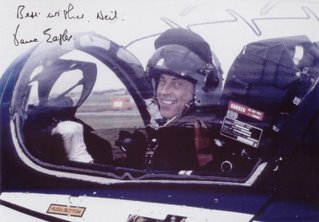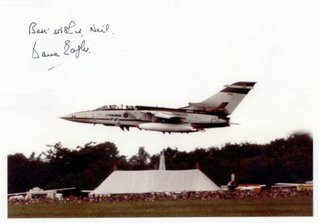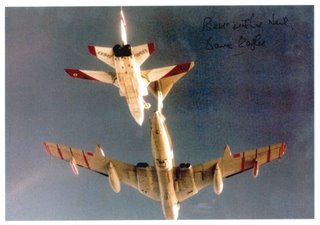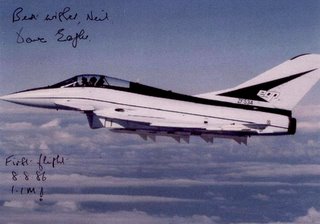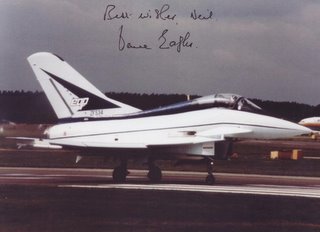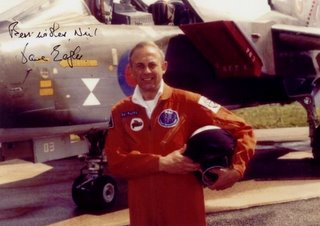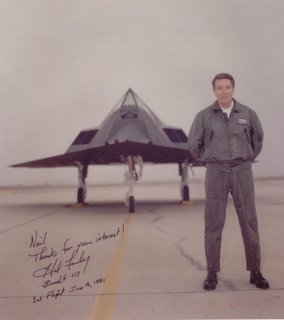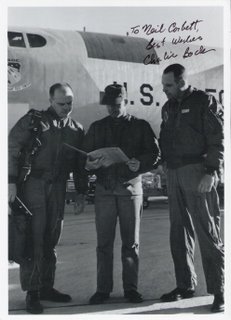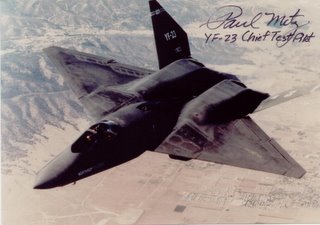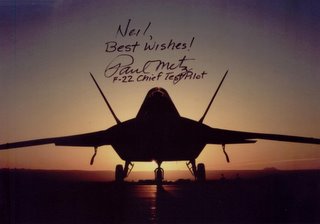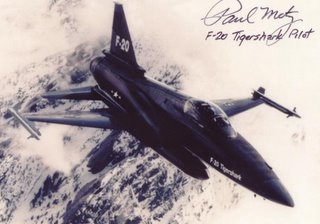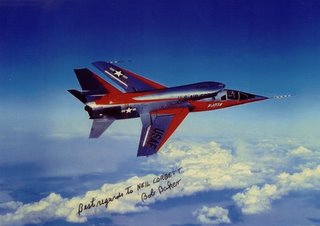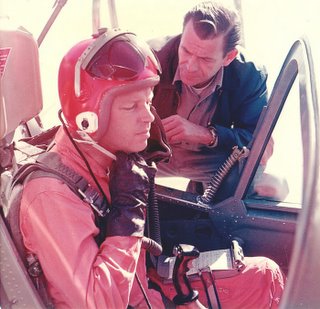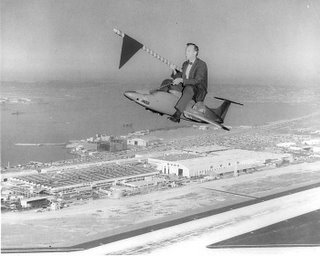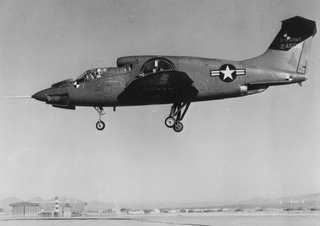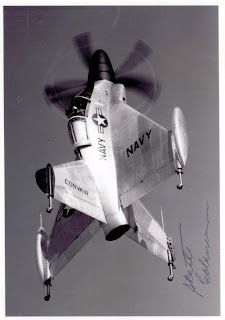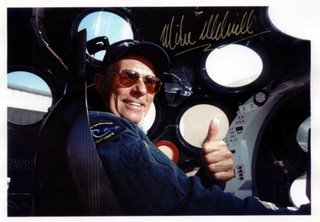 Mike Melvill
Mike Melvill is Vice President/General Manager, a Test Pilot and one of 10 owners of Scaled Composites LLC in Mojave,
California. He has worked for Burt Rutan for 27 years, and has 23 years of experience as an experimental test pilot.
He holds an FAA Commercial pilot’s certificate, ASEL, AMEL, instrument airplane, Rotorcraft-helicopter and Glider. He recently became the Nation’s first Commercial Astronaut, after flying SpaceShipOne to above 100 km on June 21st 2004.
He has accumulated 7050 flight hours in 128 fixed-wing types, and 12 rotary wing types.
He is a Fellow of the Society of Experimental Test Pilots.
He was awarded the IVAN C. KINCHELOE trophy in 1999 by the SETP for high altitude, developmental flight-testing of the model 281 Proteus aircraft. He was awarded his second IVAN C. KINCHELOE trophy in 2004 by the SETP for his work flight-testing SpaceShipOne.
He holds NINE World and National speed and altitude records in Rutan’s Catbird, Proteus and SpaceShipOne aircraft.
He has flown 10 FIRST flights of Burt Rutan’s aircraft designs, including Burt’s latest, the SpaceShipOne.
He built his own Variviggen and Long-EZ homebuilt aircraft.
He and Dick Rutan flew their Long-EZ’s around the world in 1997!
He has been a member of AOPA for 36 years.
He has been a member of the Experimental Aircraft Association for 32 years.
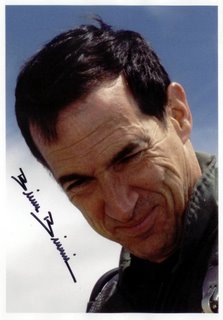
Brian Binnie 1953-2022 is a Program Business Manager and Test Pilot at Scaled Composites. He has 21 years flight test experience including 20 years of Naval Service in the Strike-Fighter community. He has logged over 4600 hours of flight time in 59 different aircraft and is a licensed Airline Transport Pilot. Brian’s educational background includes a B.S. in Aerospace Engineering and an M.S. in Fluid Mechanics and Thermodynamics from Brown University and an M.S. in Aeronautical Engineering from Princeton University. He is a graduate of the U.S. Navy’s Test Pilot School at Patuxent River, MD and the Naval Aviation Safety School at Monterey CA.
He is a member of the Society of Experimental Test Pilots and a published member of the American Institute of Aeronautics and Astronautics.
Flight Test Experience
Scaled’s Model 318 White Knight
Scaled’s Model 316 SpaceShipOne
Roton Flight Test
F/A-18 Electronic Warfare Suite Testing and Integration
F/A-18 TSSAM Weapon Launch Envelope Expansion
A-6E TSSAM Weapon Launch Envelope Expansion
F/A-18 SLAM-ER Weapon Launch Envelope Expansion
A-6E SLAM-ER Weapon Launch Envelope Expansion
F/A-18 LEX Fence Performance Map
F/A-18 ATARS Transonic Handling Evaluation
A-7E Structural Flight Test Qualification Program
F/A-18 KC-10 Wing Tip Refueling Pod Evaluation
A-7E KC-10 Wing Tip Refueling Pod Evaluation
F/A-18 F404 2nd Source (Pratt & Whitney vs GE) Engine Envelope Expansion
F/A-18 Hi-Energy Nose Strut -T/Off and Landing Eval
F/A-18 First LGB Weapon Delivery Using Self-Lasing FLIR
Other Related Experience
Completed for the ROTON: Hazard Analysis / Aircrew Checklists / Normal & Emergency Procedures ,Conducted Flight Test / Developed Operational Flight Procedures (Tactics) / Provided Fleet Training (1 to 5 day course) for F/A-18 and AV-8B EW Suites. Expanded curriculum to include Foreign Military Customers and provided in-country training to
Finland,
Malaysia and
Italy.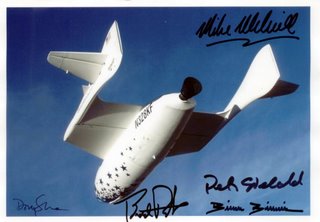
Scaled Composites created the White Knight, Space Ship One Combo in their quest for the, "X-Prize."Burt Rutan and his pilots; Brian Binnie, Mike Melvill, Doug Shane, Peter Siebold.
Note the "N" number of Space Ship One is N328KF, a reference to the altitude required, in feet, to reach Space, 328K, or 328,000 Feet.
Flight 60L / 15P - Astronaut Mike Melvill piloted the first successful commercial flight into space June 21st, 2004 achieving an altitude of 328,491 feet in Space Ship One. White Knight pilot Binnie co-pilot Stinemetze.
Flight 65L / 16 P - X1 - First flight of the X-Prize was flown successfully by Mike Melvill on September 29th, 2004. Space Ship One achieved an altitude of 337,700 feet (radar data). White Knight pilot Binnie co-pilot Stinemetze.
Flight 66L / 17 P - X2 - Second flight to win the X-Prize was flown successfully by Brian Binnie on October 4th, 2004. Space Ship One achieved an altitude of 367,500 feet (radar data). White Knight pilot Melvill co-pilot Stinemetze.
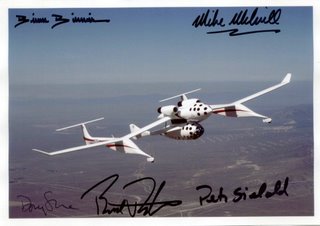


Doug Shane is Vice President/Business Development, Director of Flight Operations and Test Pilot for Scaled Composites. He has 21 years experience in aircraft flight test, design, program management, and business development, with particular expertise in research aircraft developmental flight test. He has been the Flight Operations Director at Scaled since 1989, and has been directly responsible for the safe performance of more than 25 research flight test programs.
Mr. Shane holds a Bachelor of Science in Aerospace Engineering from the University of Kansas, Lawrence, KS, 1982.
Flight Experience
First flight and large portion of developmental test of the ARES, a single-seat, single-engine jet fighter, including ground and flight firing tests of GAU-12/U 25mm cannon.
First flight and project pilot for a next-generation general aviation airplane, powered by a unique automotive-derived engine system.
First flight of an experimental jet-engine derivative of the Long-EZ aircraft.
First flight of the VisionAire Vantage business jet.
First flight of the Williams International V-Jet II.
First flight of the Adam Aircraft Model 309 piston twin-engine aircraft
First flight of the Scaled Model 318 White Knight
Total Flight Time: approximately 3500 hours, in more than 130 types of aircraft
Hold FAA Commercial certificate, with ASEL, AMEL, Instrument Airplane,Built and operate Rutan Long-EZ aircraft; own and operate 1948 Stinson 108-3,Fellow, Society of Experimental Test Pilots (SETP) and currently President-Elect of SETP,Winner of prestigious Iven C. Kincheloe Award in 1997 from Society of Experimental Test Pilots.
Peter Siebold is an Aeronautical Engineer, Experimental Test Pilot, and Flight Test Engineer at Scaled Composites, LLC. Pete holds a Bachelor of Science in Aerospace Engineering from California Polytechnic University, San Luis Obispo and has been working at Scaled since 1996. Pete is a Design Engineer specializing in Avionics and Data Acquisition Design and Development. He was responsible for the development of the Simulator, Avionics/Navigation System, and Ground Control System for the SpaceShipOne Program.
Flight Experience
17 years of flight experience,2000 hours in 35 different fixed wing aircraft,Holds FAA Commercial ASEL, AMEL, Commercial Glider, instrument airplane certificates,Holds FAA Flight Instructor ASEL, AMEL, instrument airplane certificates,Member of the Aircraft Owners’ and Pilots’ Association,Member of Experimental Aircraft Association,Associate Member of The Society of Experimental Test Pilots,Participated in the flight testing of the following.
VisionAire Vantage Model 247 prototype
Proteus Model 281 prototype
Adam Model 309 prototype
Toyota TAA-1 prototype
Scaled Model 318 White Knight
Scaled Model 316 SpaceShipOne
Wrote all the operational checklist and provided the Fleet Tactics Manual for the TSSAM Weapon System,Planned and executed the first (and only) radar chase of the Tomahawk cruise missile to demonstrate more effective surface fleet training,Prepared and briefed the Australian Air Force on new Operational Flight Software for their F/A-18 aircraft.
